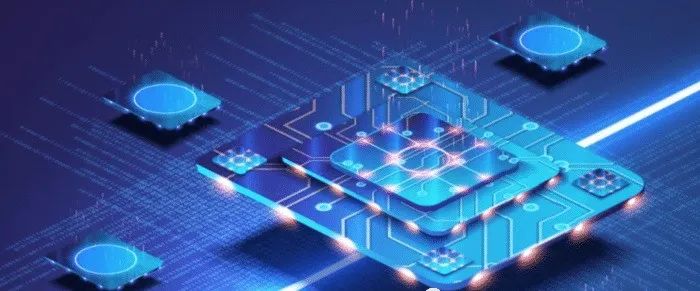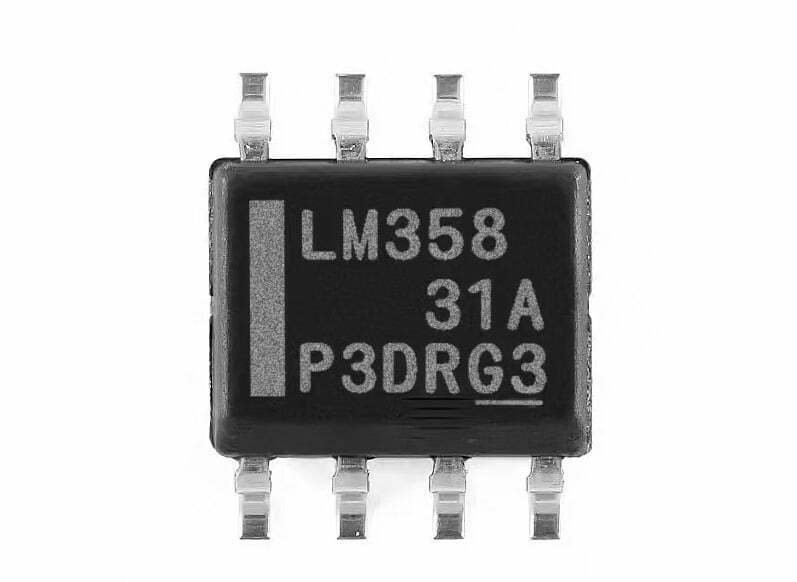Machine Learning of Noise-Resilient Quantum Circuits
In the world of quantum computing, machine learning can play an important role in improving the performance of noise-resilient quantum circuits. By combining principles from both fields, researchers have been able to develop a better understanding of the physical characteristics of these devices and how they can be manipulated and optimized for greater efficiency. Through machine learning, these circuits can be trained to better detect and mitigate noise, resulting in improved performance and greater potential for success. In this article, we’ll explore the advantages of machine learning for quantum computing, the fundamentals of noise-resilient quantum circuits, and the application of machine learning techniques to improve noise-resilience.
Importance of Quantum Noise Processing
Quantum noise processing has gained significant attention because of its importance. Leading companies and organizations, including Google, IBM, Sandia National Laboratories, and Quantum Benchmarking, have invested in this field to develop practical tools for evaluating, characterizing, and reducing quantum noise. The “Quantum Frontiers” white paper released by the US National Quantum Coordination Office in 2020 identified “characterizing and reducing quantum noise” as one of the eight major strategic frontiers for quantum information science. The goal is to achieve breakthroughs in research and technology for quantum noise processing and increase the value of quantum computers. It is fair to say that quantum noise processing is a crucial path towards achieving large-scale quantum computing.
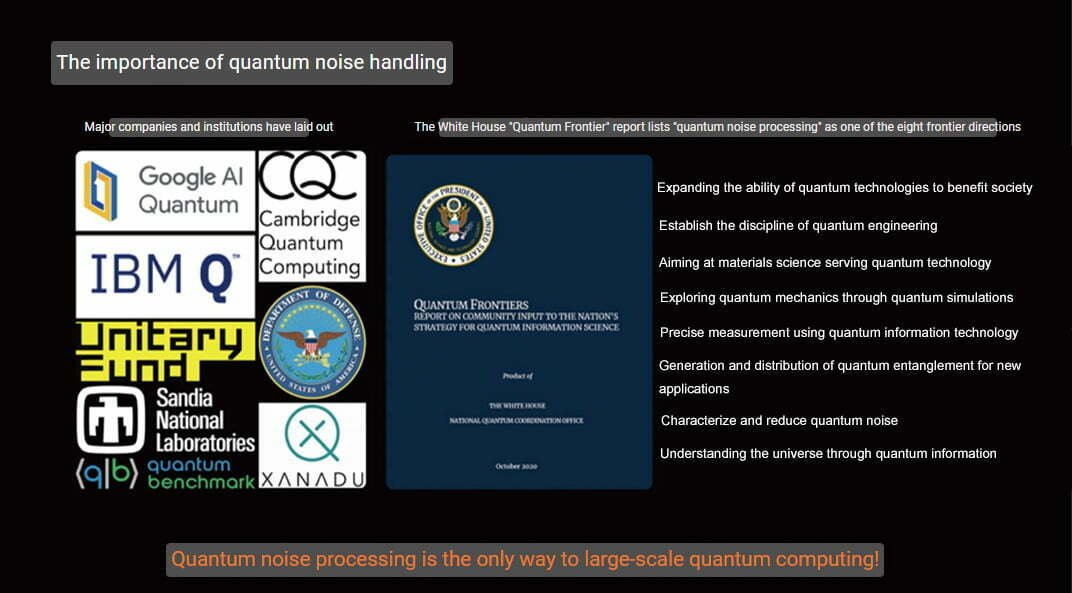
Overview of Noise-Resilient Quantum Circuits
Noise-resilient quantum circuits are circuits designed to be resilient to external sources of noise. These circuits are typically composed of two main components: a quantum processor and a classical controller. The quantum processor is responsible for executing the circuit’s instructions, while the classical controller is responsible for controlling the quantum processor and ensuring that it executes the instructions correctly.
The main challenge in designing noise-resilient quantum circuits lies in understanding and controlling the physical characteristics of the device. These characteristics include the quantum processor’s energy levels, its sensitivity to external sources of noise, and its ability to accurately execute instructions. To successfully design a noise-resilient quantum circuit, it is essential to understand these physical characteristics and how they can be manipulated and optimized for greater efficiency.
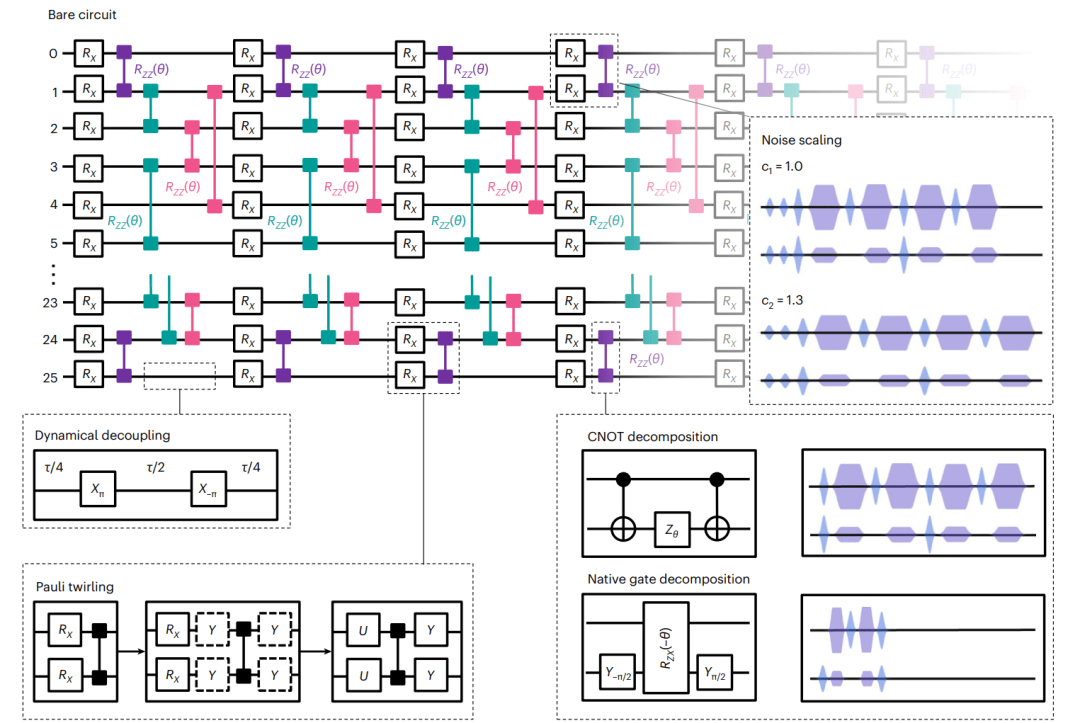
Understanding the Physical Characteristics of Noise-Resilient Quantum Circuits
To successfully utilize machine learning for noise-resilient quantum circuits, it is essential to first understand the physical characteristics of these devices. The energy levels of the quantum processor must be carefully controlled to ensure that the circuit is functioning correctly and is resilient to external sources of noise. Additionally, the sensitivity of the processor must be taken into account to ensure that the circuit is capable of accurately executing instructions.
It is also important to understand the physical characteristics of the classical controller. This component is responsible for controlling the quantum processor and must be able to accurately identify and respond to potential sources of noise. The classical controller must also be able to accurately interpret the instructions provided by the user, as well as the feedback from the quantum processor.
Sources of Quantum Noise
As far, you know the quantum noise is an important topic for technology research. So how is it generated?
Well, from a hardware perspective, there are many sources of quantum noise, such as readout noise, decoherence, crosstalk, leakage noise, flux noise, charge control noise, and so on. From a software perspective, these noises correspond to operations such as imperfectly implemented quantum state preparation, quantum gates, quantum measurements, etc., which can result in serious errors in the overall computation.
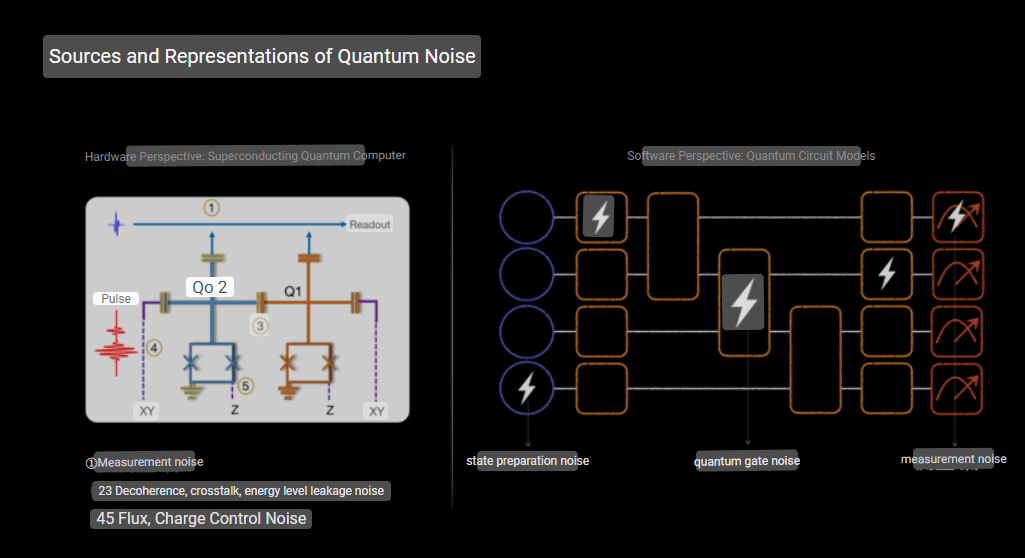
How to Deal with Quantum Noise?
After understanding the sources of quantum noise, how should we deal with it? In the Quantum Frontiers Forum at the 2021 Baidu Create conference, Professor Artur Ekert and Dr. Duan Runyao, director of Baidu Quantum Computing Research Institute, had an in-depth discussion on this issue.
Professor Artur Ekert is a pioneer in quantum computing and one of the co-inventors of quantum cryptography. In the discussion, Professor Ekert pointed out that there are two ways to dealing with quantum noise.
- The first is Bottom-up (fight against the noise): continuously improve the accuracy of quantum computers and reduce quantum noise from the hardware level.
- Another one is Top-down (accommodate the noise): evaluate, characterize, and correct quantum noise to improve the ability of quantum computers from the software level, under the existing hardware conditions.
Similar to the field of machine learning, on the one hand, we push out GPUs, TPUs, and even NPUs from the hardware side to continuously improve data processing capabilities, and on the other hand, we constantly design more efficient machine learning algorithms to fully exploit the computing power of existing hardware.
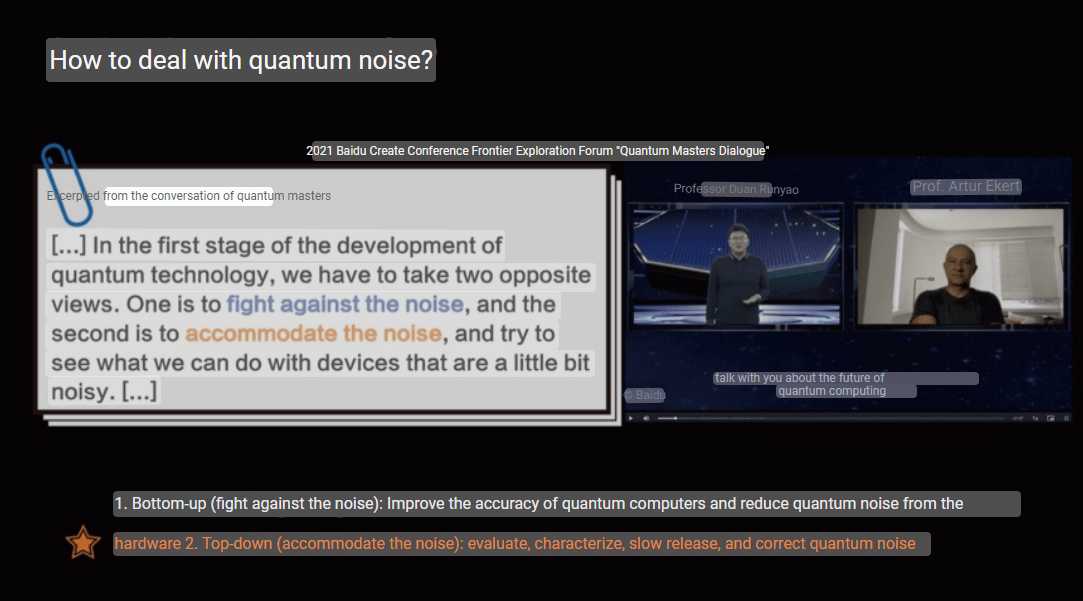
What is Machine Learning?
Machine learning is a field of artificial intelligence (AI) that focuses on the development of algorithms that can learn from data. Machine learning algorithms can be used to identify patterns in data, to predict outcomes, or to make decisions based on the data that they have been trained on. These algorithms can also be used to improve the efficiency of a system or to identify potential sources of noise.
In the world of quantum computing, machine learning algorithms can be used to identify patterns in the physical characteristics of the device, allowing for greater insight into how the circuit can be optimized for greater efficiency. Additionally, machine learning algorithms can be used to train the system to better detect and mitigate noise, resulting in improved performance.
Advantages of Machine Learning for Quantum Computing
The use of machine learning for quantum computing offers several advantages, particularly when it comes to noise-resilience. Machine learning techniques can help to identify patterns in the system that would otherwise be difficult to detect, allowing for more efficient and accurate optimization. Furthermore, machine learning algorithms can be used to create models that can be used to better understand and predict the behavior of the system in response to different parameters. This can help in the design and optimization of circuits, as well as provide a better understanding of the physical characteristics of the device.
In addition, machine learning can help to reduce the time and resources required to train these circuits. This can be especially useful for large-scale systems, where it may be impossible or impractical to train the system using traditional methods. Machine learning can also be used to identify potential sources of noise and optimize the circuit for greater resilience against these sources. Finally, machine learning can be used to automate the process of optimizing the circuits for greater efficiency, reducing the time and effort required for manual optimization.
Applying Machine Learning Techniques to Improve Noise-Resilience
Once the physical characteristics of the noise-resilient quantum circuit have been identified and understood, it is then possible to apply machine learning techniques to improve the noise-resilience of the system. Machine learning algorithms can be used to identify potential sources of noise and to develop strategies for mitigating these sources. For example, machine learning algorithms can be used to identify patterns in the noise and to develop strategies for reducing or eliminating these sources. Additionally, machine learning algorithms can be used to optimize the circuit for greater efficiency, resulting in improved performance.
In addition, machine learning algorithms can be used to automate the process of optimizing the circuit for greater efficiency. By automating this process, the time and resources required for manual optimization can be reduced, resulting in a more efficient system. Finally, machine learning algorithms can be used to identify potential sources of noise and to develop strategies for mitigating these sources, resulting in improved noise-resilience.
Noise Mitigation Strategies with Machine Learning
When it comes to noise mitigation strategies, there are a number of techniques that can be employed with the help of machine learning. These strategies include the use of error correction codes, the use of noise-resistant logic gates, and the use of noise cancellation techniques.
Error correction codes are used to minimize the impact of errors in the system by adding redundant data to the system. This allows for the detection and correction of errors in the system, resulting in improved performance.
Noise-resistant logic gates are designed to reduce the impact of external sources of noise by using a combination of logic gates that are designed to be resistant to these sources. This can help to reduce the impact of noise on the system, resulting in improved performance.
Finally, noise cancellation techniques can be used to mitigate the impact of external sources of noise by using an array of sensors to identify and cancel out the noise. This can help to improve the performance of the system, resulting in greater efficiency.
Challenges Associated with Machine Learning of Noise-Resilient Quantum Circuits
While machine learning can be a powerful tool for optimizing noise-resilient quantum circuits, there are several challenges associated with its use. In particular, machine learning algorithms require large amounts of data to be effective. Additionally, the algorithms must be trained on a variety of different types of data to be effective. This can be a time-consuming and resource-intensive process. Additionally, machine learning algorithms must be carefully tuned to ensure that they are properly optimized for the specific application.
Finally, machine learning algorithms must be carefully tested to ensure that they are working correctly. This can be a time-consuming and resource-intensive process, as it requires the use of simulated environments and real-world tests.
Conclusion
In conclusion, machine learning can be a powerful tool for improving the performance and noise-resilience of noise-resilient quantum circuits. By understanding the physical characteristics of these devices and applying machine learning algorithms, researchers have been able to successfully optimize these circuits for greater efficiency and improved performance. Additionally, machine learning algorithms can be used to identify potential sources of noise and to develop strategies for mitigating these sources, resulting in improved noise-resilience. While there are several challenges associated with the use of machine learning for noise-resilient quantum circuits, the potential for improved performance and greater efficiency makes it an exciting field of research that has the potential to revolutionize the field of quantum computing.

